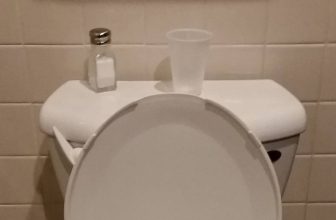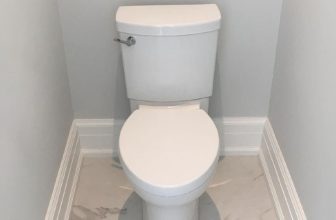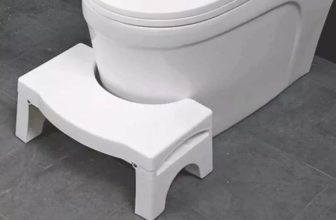Wood vs. Plastic Toilet Seat – The Sensible Dilemma
While most toilet seats are now plastic, wooden ones go through a revival now. Once the most popular type, now wooden chairs are either a vintage reminder of the past or a part of the green lifestyle. Choosing a wood vs. plastic toilet seat is, in fact, about your attitude as well as about your comfort.
Wooden seats are comfortable to find if you give them a minute. The price is slightly higher than that of most plastic analogs. On the other hand, the look and the feel they provide cannot be recreated with synthetic materials. If you’re all about natural things, the idea of a wooden seat may appeal to you.
Wood vs. Plastic Toilet Seat Comparison
Here are the necessary things for you to know about today’s usage of wood. This will help you choose between wood or plastic toilet seat for your home.
What are toilet seats made of?
The most popular toilet seat material is now plastic. Chances are yours is plastic too. But wooden seats are still used, as they are relatively easy to make, creating a unique feel.
There are also polyresin toilet seats to be found, though they are extinct because of the higher price and not-so-premium look and feel for the money.
Other materials (fabric on a plastic base, plywood, or anything else) are too rare to discuss seriously. They make sense if someone presented one to you (don’t laugh while picturing this) or if you are creating conceptual interiors.
But, hey, both are soft toilet seats unsanitary and short-living, so it will take a strong passion for choosing these! So, for most of us, the dilemma is wood or plastic toilet seats.
Wood and plastic toilet seat pros and cons
The pros of plastic seats proved to be severe enough for them to dominate the world. Plastic seats are:
- Easy to produce;
- Cheap;
- Easy to wash;
- Available in different shapes and colors;
- Lightweight;
- Versatile;
- Easy to equip with heating and sensors;
- Long-lasting.
These pros are apparent, and they make plastic seats the mainstream. Yes, they have their cons too:
- Easy to damage;
- Feel cold (unless heated);
- Worse for heavyweight persons;
- Easy to stain with urine;
- Look plain.
Speaking of wooden seats, they attract with many features that separate them from plastic ones:
- Natural warm feel (due to low thermal conductivity);
- Stylish look;
- Great for conceptual interiors;
As for cons, there are also some, but they are not fatal.
- Weight. A solid wood toilet seat is way heavier than an almost empty plastic one. So it needs to be handled with care in order not to damage the toilet itself. This habit forms soon, though.
- Hygienic issues. As wood is porous, it can absorb smells or bacteria. Not that it’s a fatal flaw; it just requires more attention to keeping it clean.
There is one more thing to remember many of us are too young to witness. Historically, wooden seats have been used in outdoor toilets, not combined with bathrooms.
They didn’t experience that combination of heat and humidity that often, so wooden chairs could last for decades. Now, given the conditions of usage, wood needs special impregnation and finishing.
Answering Your Frequently Asked Questions
How to clean wooden toilet seats?
To wash them, you need regular detergents like dish soap. Avoid bleaches. Otherwise, you can damage the finish.
What material is best for a toilet seat?
As today’s industry shows, plastic ones are the most usable. Wooden ones, though, have their pros.
Do wooden toilet seats smell?
Sorry to disappoint you, but if you imagine that smell of fresh wood shavings and resin, that’s not the case in the XXI century (unless you’re into woodworking and making the seat yourself).
The finish applied to protect the wood from heat and humidity blocks most smells. On the other hand, the same measure protects the wood from absorbing less pleasant aromas.
What is the most comfortable toilet seat, wooden or plastic?
If we forget about style at all, we come to this. Plastic ones are probably easier to handle and take care of. Wooden seats, though, provide a more natural, relaxing feel, but because of their weight, you need to be more careful with them.
Are wooden toilet seats hygienic?
Yes, modern ones are. But you need to take care of them, wash and clean them periodically, even more than you would with plastic or any other seats. Scientists also prove that the hygienic properties of different wood species vary.
Decide From The Look
Wooden seats are great if you want to recreate the feel of your countryside childhood or to make your home environment greener. Oh, how better they are for heavy persons that need the best support!
And yes, they feel much warmer. But they need more frequent washing and cautious handling, and probably they have to be replaced sooner.
What’s your best type of toilet seat? Which one have you got at home, and are you happy with it? What else would you recommend considering before choosing your seat? Well, even if you’re on it right now, we don’t mind if you drop a comment (just a word, okay?) or share this on your Facebook or Twitter to have a toilet talk with friends.
Also read:
- Woodbridge Toilet Reviews
- Kohler Santa Rosa Review
- Best Low Flow Toilets
- 1-Piece vs 2-Piece Toilet
- Chair Height vs Standard Height Toilet
- Toilet Drain Pipe Sizes
- Toilet Wax Ring
- How to Shim a Toilet
- How to Unclog a Toilet That’s Backing Up Into the Bathtub





